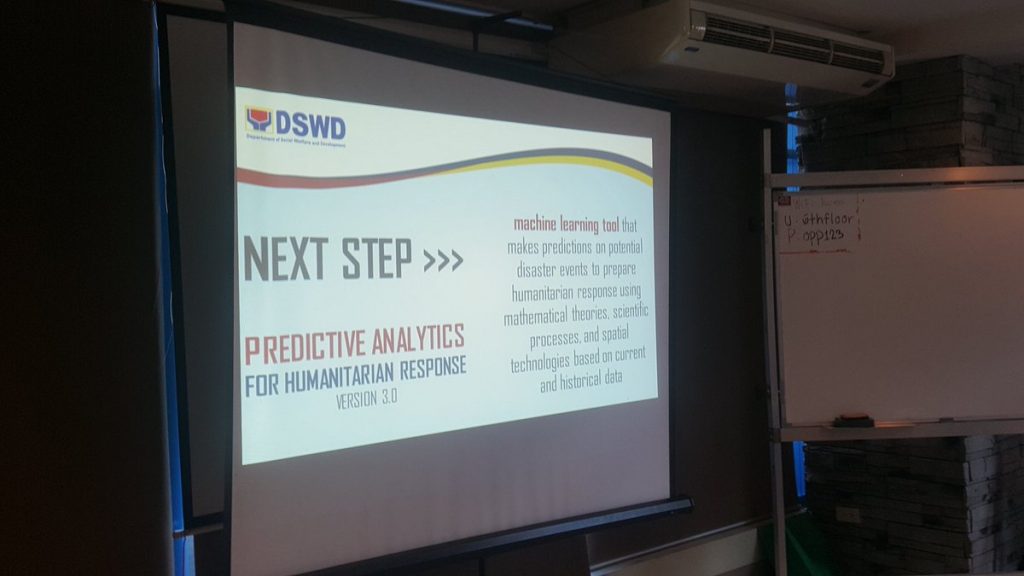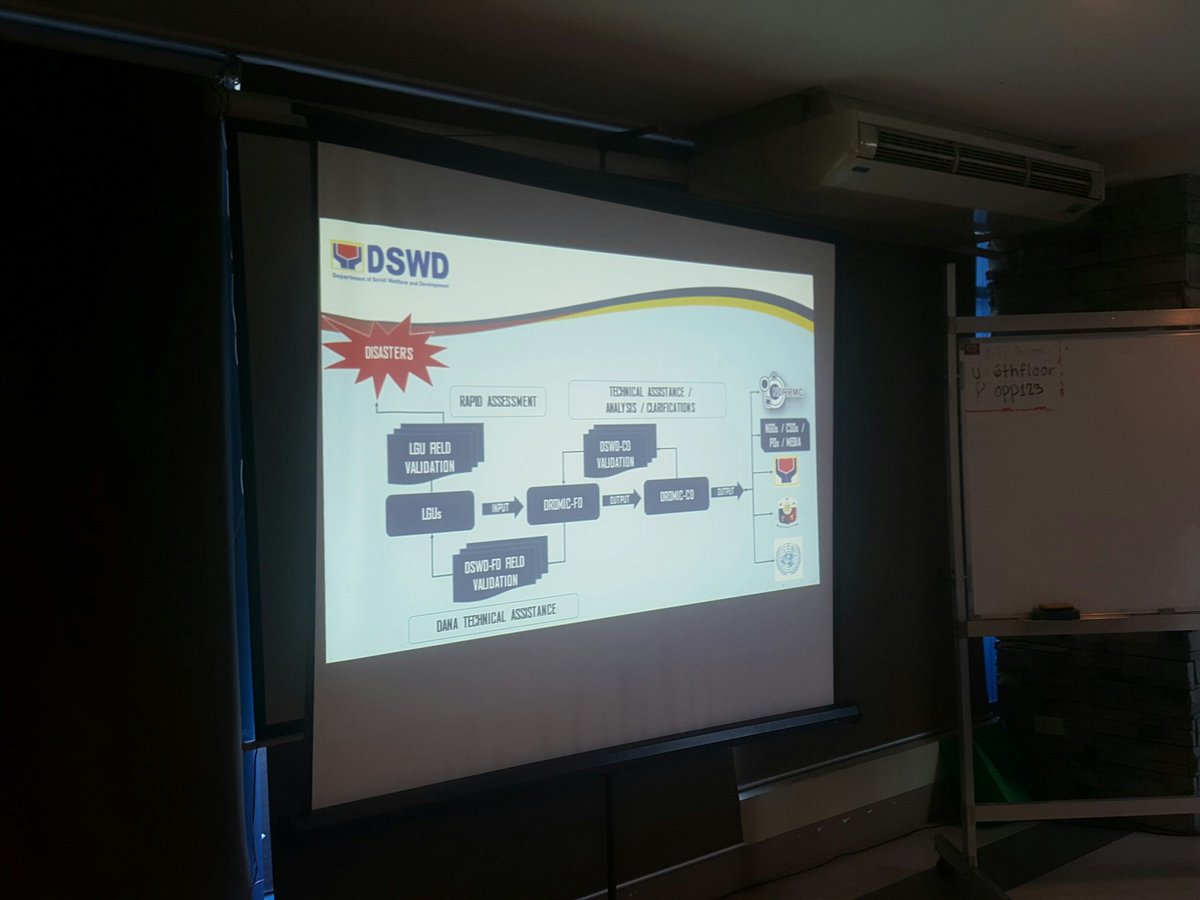
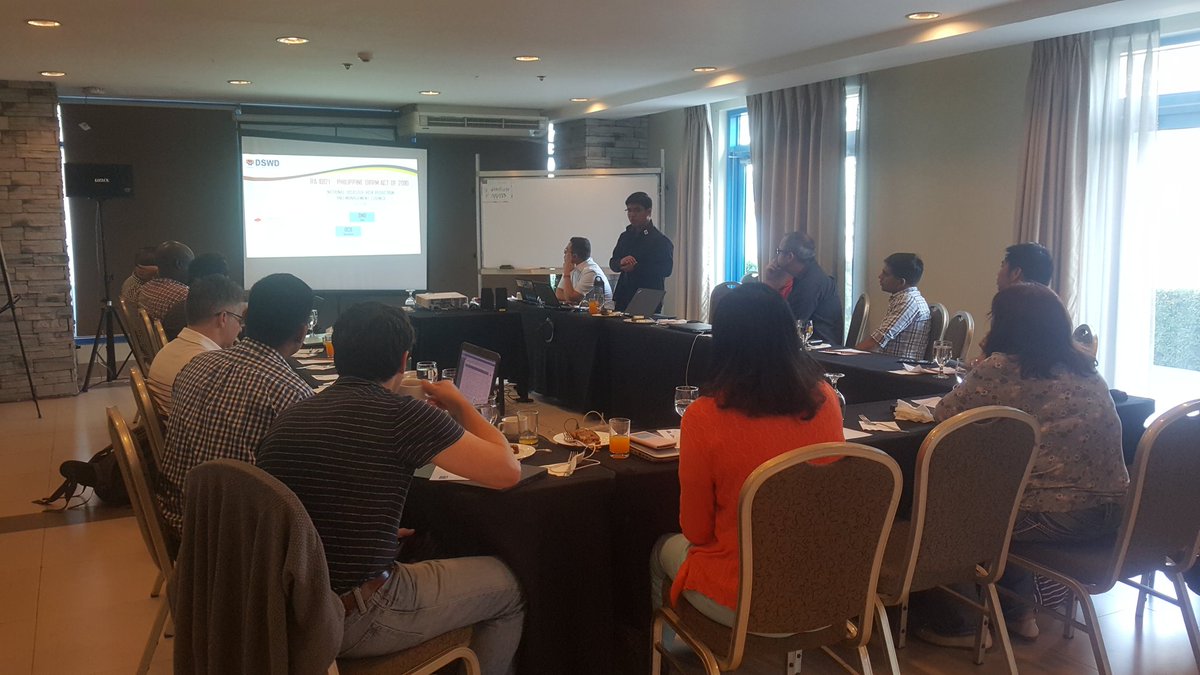

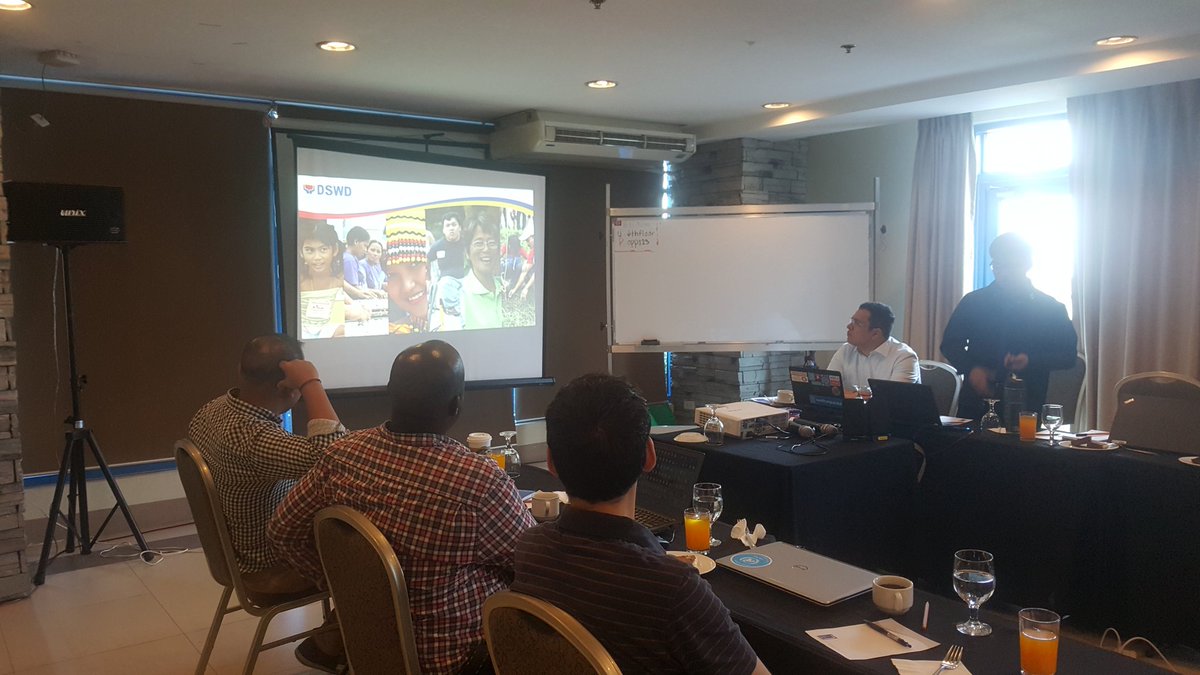
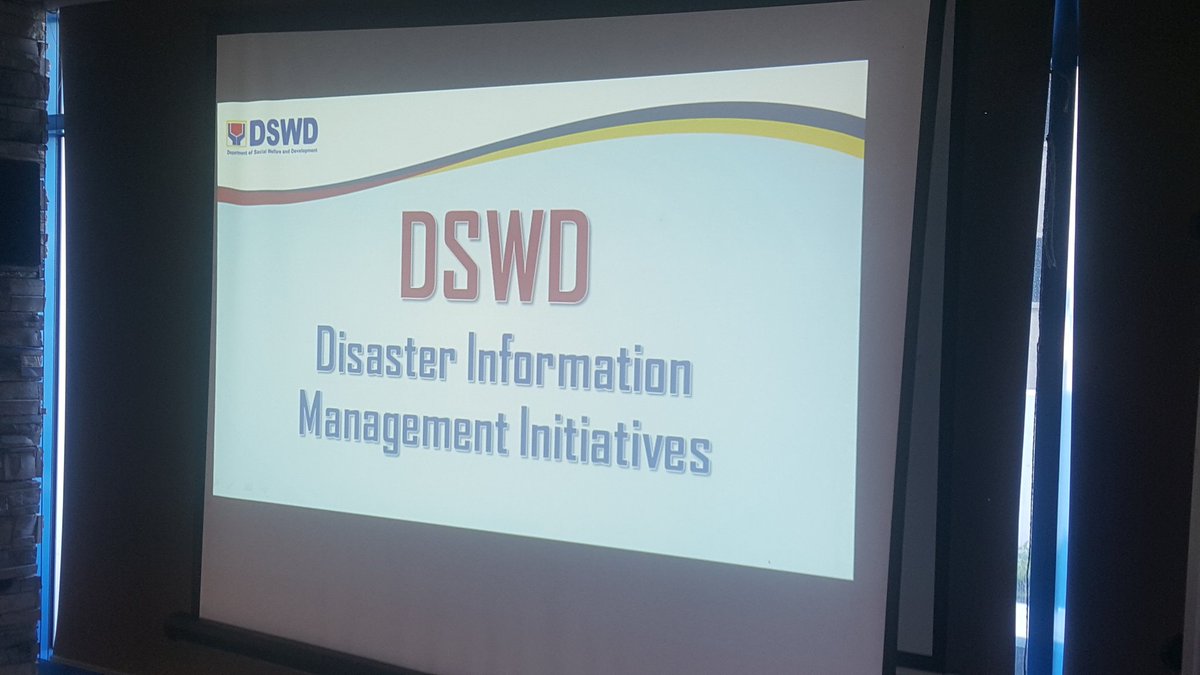
The current data flow of disaster information was also presented as shown in the photo above. As it stands, it is an extensive process where the data comes from the field and then validated in the Department’s Field Offices (FOs). These reports are then submitted to the Central Office (CO) to be validated, again, by the DROMIC before being processed into reports that are open to the public. In answer to this, the DROMIC is in the midst of providing Technical Assistance and Consultations to FOs and LGUs regarding disaster reporting and the use of Disaster Assistance Family Access Card (DAFAC). These efforts hope to gather as much inputs as possible in order to come up with the Disaster Response Operations Monitoring Information System (DROMIS) and the Family Access Card for Emergencies (FACE). These information technologies aim to allay disaster reporting and expedite the data flow pictured above.
Another highlight of the presentation was when the Predictive Analytics for Humanitarian Response (PAHR) was showcased. PAHR is the crystal ball, so to speak, of the Department in order to prepare for the appropriate level of response whenever there are potential disaster events. It is all about making predictions using mathematical theories, scientific processes, and spatial technologies based on current and historical data. In a nutshell, Disaster Imagination is what it is and asks questions such as “What could possibly happen?” “Where could it possible happen?” and “How many will be affected should it happen?”
Also, the current policy requires ₱3 million for Standby Funds and 30,000 family food packs (FFPs) for Stockpile for all regions. Using PAHR, the allocation of Standby Funds and Stockpile will be based on the risk profile of each respective regions. This will ensure that more resources will be allocated to regions that are more frequently visited and most affected by disaster events. PAHR can be used in identifying areas that are possible to be affected as well as the number of people. Hence, preparations on the location and amount of prepositioned goods can be carried out before the disaster even happens.
